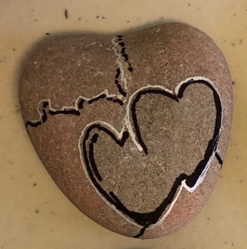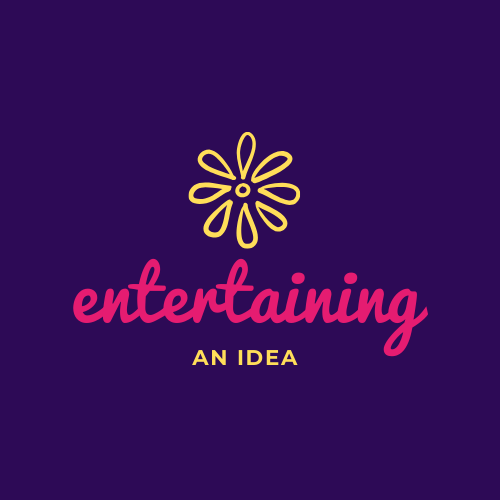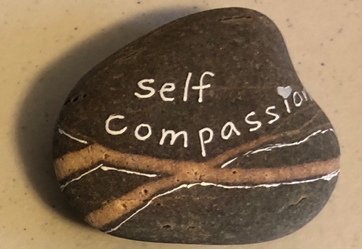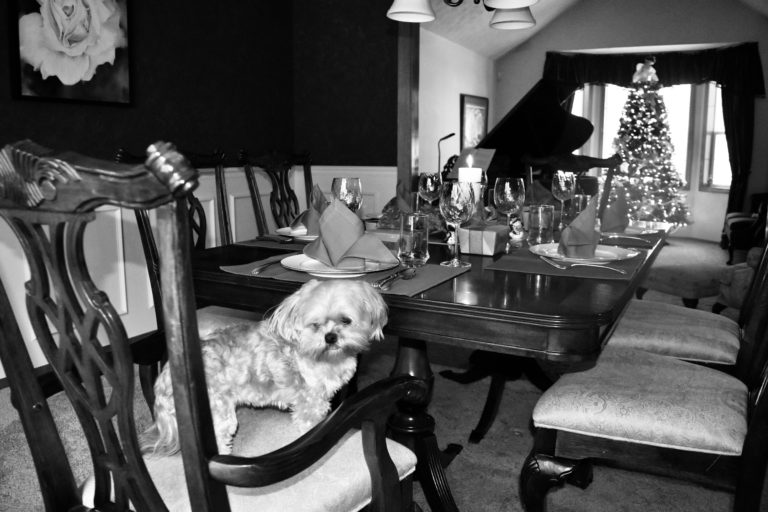“A Resilient Spirit – Letting go of numbing and powerlessness”
This is the fourth of the ten guideposts for Wholehearted living from Brené Brown’s Daring Greatly, (2012, p. 9). One definition of re·sil·ience includes “the capacity to recover quickly from difficulties, toughness”, and “the ability of a substance or object to spring back into shape, elasticity” (Oxford American Dictionary, accessed online 3/25/2020). Brené Brown posted the following online recently:
“This pandemic experience is a massive experiment in collective vulnerability. We can be our worst selves when we’re afraid, or our very best, bravest selves. In the context of fear and vulnerability, there is often very little in between because when we are uncertain and afraid our default is self-protection. We don’t have to be scary when we’re scared. Let’s choose awkward, brave, and kind. And let’s choose each other.”
This “mass experiment in collective vulnerability” in the face of the corona virus brings all of us face-to-face with adversity in some form or other and evokes a range of emotions. Resilience – recovering or coming back into shape – is a highly valuable capacity and concept in times like these. So, what can we do to enhance our resilience? Brené Brown encourages us to let go of numbing and powerlessness.
Numbing and Powerlessness
Numbing shows up in various forms – “crazy-busy” is a common one, and anything else we do that keeps us from feeling or helps “take the edge off”, like using various substances (alcohol, drugs of various types, dark chocolate, good coffee) or engaging in obsessive behaviors like shopping or binge-watching our favorite HBO series. Brown says, “we’re desperate to feel less or more of something” (Daring Greatly, 2012, p. 138). Numbing may prevent us from feeling anxiety, instability, powerless or shame about not being in control, or some other less desirable or comfortable emotion. However, it also prevents us from feeling the more desirable emotions that greatly enrich our lives, such as gratitude and joy. Numbing keeps us from being really present with whatever is there – emotions, challenges, ourselves, and each other. Not so helpful when staying connected is more important than ever as we are asked to practice social distancing and self-isolation.
“When we are no longer able to change a situation,
we are challenged to change ourselves.”
~ Viktor Frankl, Man’s Search for Meaning
Tara Brach offers a number of beautiful renditions of this practice as the R.A.I.N. meditation – check her out on YouTube (e.g., https://m.youtube.com/wathc?v=5Bg3F21 Tara Brach: Guided Reflection on Bringing RAIN to Fear – about 12:24 in duration, or try out her guided meditations on her website at https://www.tarabrach.com or others offered in the list of Resources at the end of this blog.
Things We Can Do to Build Our Resilience
I’m not so naïve as to think that we will all stop numbing behaviors or want to… and we can (as Brené Brown suggests) be mindful about our numbing, we can learn how to feel our feelings (developing more emotional literacy), and we can learn to lean into discomfort.
One thing that has really helped me maintain a somewhat calm internal state and hopeful mindset in times of adversity is to accept that 1) things are going to be challenging; 2) emotions are going to arise that I may not like (anxiety, fear, frustration, anger, impatience, etc.); and 3) things will change. When I accept those conditions (challenges, emotions, and change will happen), I find I’m less reactive and more able to respond in a resourceful and appropriate way.
Next time you find yourself feeling fearful or powerless or you notice that you are wanting to feel less or more of something, try this:
- Just notice what you are feeling. Name or identify the emotions if you can (e.g., I’m feeling unsettled and anxious, I’m feeling angry. I’m feeling powerless and ashamed I can’t control things).
- Allow whatever is there for you (emotions, a challenging situation, etc.) to be there. Sometimes it helps to pause (stop what you are doing, take a breath, and observe what’s happening and what you are feeling in relation to it).
- Get curious – What’s really happening here? What’s underneath what I’m feeling? What’s another way to look at this? What else could be true?
- Nurture self-compassion and resourcefulness. Soothe yourself in healthy ways and with supportive thoughts and words. For example, acknowledging the challenge and telling yourself that it’s normal to feel stressed, and recognizing this is a chance to practice a different way of responding. The word crisis comes from the Greek “to separate, to sift” meaning to judge and keep what is worthwhile and to let go of what is not. There is an opportunity in every crisis, and the bigger the crises, the better the opportunity can be.
Practice Opportunities and Choice
Let’s remind ourselves that this moment is a practice opportunity and we have choice.
“Between stimulus and response there is a space
In that space is our power to choose our response.
In our response lies our growth and our freedom.
Everything can be taken from a [hu]man but one thing:
the last of the human freedoms –
to choose one’s attitude in any given set of circumstances,
to choose one’s own way.”
~ Viktor Frankl, Man’s Search for Meaning
We can be present to whatever is happening inside us and outside of us, and we can be resourceful rather than reactive. We can find new solutions to problems, and we can offer support or assistance to a neighbor, friend, or family member in whatever ways we can. We can start new projects or pick-up those put aside because we were too busy.
And, as a counter to perfectionism, or expecting ourselves to respond perfectly in a mentally, physically, emotionally, and socially challenging and ever-changing situation like the one we are all dealing with in COVID-19, we can be creative!
Last time I promised I’d paint rocks and share photos. I found that in allowing myself to experiment with it and not expect perfectionism, it was easier to get started. Once I got started, I was having so much fun that two hours flew by without me noticing. The rocks aren’t finished yet, and I’m looking forward to more experimenting and playing with them more.
Wishing all of us self-compassion, presence with and acceptance of what is, and the courage to take advantage of and experiment with practice opportunities to connect with ourselves and each other in safe and resourceful ways.
Stay well 😊
Resources
Brown, Brené (2012). Daring Greatly: How the Courage to Be Vulnerable Transforms the Way We Live, Love, Parent, and Lead. New York, NY: Gotham Books.
Meditations:
- Brach, Tara. Guided Meditations. https://www.tarabrach.com/guided-meditations/
- Kornfield, Jack. Meditations. https://jackkornfield.com/meditations/
- Neff, Kristin. Guided Meditations. http://self-compassion.org/category/exercises/#guided-meditations
- Shambhala Mountain Center. The Science of Meditation (Official Trailer). https://www.youtube.com/watch?v=zi8B-jTK0Cc
- UCLA Mindful Awareness Research Center. Free Guided Meditations from UCLA Health. http://marc.ucla.edu/body.cfm?id=22

A LITTLE NOTE:
EAI has advertising relationships with a few select companies. The links below are affiliate links, which means I earn a small percentage from those sales. I use this affiliate revenue to support the continued growth of Entertaining An Idea. My full disclosure policy is here.
Thank you!
Creativity Care Package Offer Details |
|








